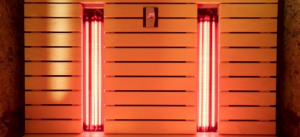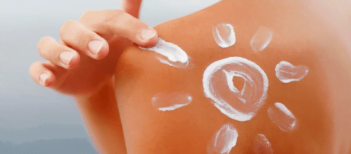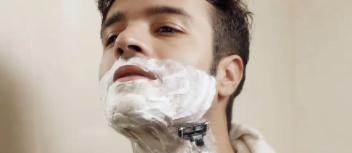Is Your Skin Burning in an Infrared Sauna? (Workings of Infrared Rays)
When I used an infrared sauna, I experienced a skin burning sensation, which was both weird and painful. I got a chemical burn on skin, which left the affected area raw and sensitive to touch and produced severe pain and redness. Worldwide interest in infrared saunas is growing due to their calming health advantages. They operate differently from regular saunas in that they heat the body directly with infrared radiation, which raises the heart rate and causes perspiration to resemble the results of a short workout.
Because the air temperature is lower with this approach, many people find it a more comfortable experience. There may be worries about the infrared light’s ability to burn skin. When precautions are taken, nevertheless, the risk of burning skin from an infrared sauna is quite low. These saunas usually don’t employ infrared radiation at a strong enough level to burn people.
However, if you don’t follow the advised length of the session, you can have sunburn-like symptoms, especially in places where your skin is thinner. Investigating the workings of infrared light and any possible hazards related to using baths or other infrared light treatments is crucial.
Is it possible to be burned in an infrared sauna?

Although infrared radiation doesn’t usually result in sunburn or raise the risk of developing skin cancer, new research indicates that it can significantly penetrate the skin. While infrared radiation by itself does not pose a significant danger of burns, when mixed with UV and visible rays, it can cause long-term skin damage.
Dermatologists have discovered that infrared radiation may have negative consequences for the skin, such as inflammation, dehydration, and damage to elastin and collagen. There is very little chance of getting skin burns due to infrared radiation in a sauna environment unless the light is very strong or exposure is prolonged.
However, using an infrared sauna might also come with other hazards, such as burns from hot surfaces, especially if the infrared lighting causes tables or other surfaces to retain heat. In conclusion, although skin burns from infrared light are conceivable, they are unlikely in a sauna because of the particular strength and frequency of the rays utilized. However, care should be taken to prevent touching warm surfaces and other possible hazards related to using a steam room.
See also: Does Sauna Benefit Wrinkles? (How Moisture and Heat Could Help)
Does skin burn from infrared light?

While infrared saunas are typically not linked to skin burns, some occurrences, and observations of burns arise from extended exposure to infrared light directly on the skin. Thinner skin parts close to the foot or ankle are frequently involved.
It could be wise to proceed cautiously when considering infrared light therapies, particularly in places like infrared massage devices or treatment facilities without medical supervision. Although there is usually little chance of skin burning when using infrared saunas, there are other uses for infrared light that need to be well monitored to prevent any negative consequences.
Working of infrared rays
Longer than visible light waves, infrared rays are invisible energy waves that are a component of the electromagnetic spectrum. At temperatures higher than absolute zero, infrared radiation is released. Through penetration and absorption by the skin’s tissues, UV rays react with the skin by converting it to thermal energy.
This process, called thermal radiation, raises the temperature of the tissue, which facilitates a rise in blood pressure, better blood circulation, and muscular relaxation. Nitric oxide is also produced in response to infrared radiation, and this compound improves cellular repair and pain relief.
Infrared treatment is linked to advantages including strengthened immunity, expedited wound healing, and better detoxification. When using infrared technology for purposes of therapy, control, and safety precautions are crucial since prolonged or strong exposure to the rays can have negative consequences such as skin burns, dehydration, or hyperthermia.
Temperature of an infrared sauna
To produce heat from within the body, infrared saunas work by directly influencing the skin with light. As a result, infrared baths have significantly colder interior temperatures than conventional saunas.
Infrared saunas generally maintain surrounding air temperatures of around 100℉, whereas conventional saunas normally maintain temperatures between 140℉ and 170℉. Considering that burning may happen in water that is hotter than 120°F, it is clear that an infrared sauna at 100°F does not pose a burning danger.
Potential dangers related to the infrared sauna

Here are some potential dangers related to infrared saunas, given below:
- Dehydration: Prolonged heat exposure can cause excessive perspiration, which, if enough fluids are not eaten, can lead to dehydration.
- Overheating: Overheating can cause dizziness, fainting, or exhaustion from heat. It can also be brought on by overusing an infrared sauna or by setting the heat too high.
- Skin Burns: Skin burns can result from prolonged exposure to strong infrared radiation or direct contact with heated objects.
- Eye Damage: If appropriate eye protection is not worn, the sauna’s infrared light can cause irritation, discomfort, or loss to the eyeball or retina.
- Medical Conditions: Before using an infrared sauna, those with specific health issues, such as cardiovascular problems, should speak with a healthcare provider to reduce the chance of negative side effects.
- Pregnancy: Because there is a chance of both the mother and baby becoming dehydrated and overheated, pregnant women should not use infrared cabins.
- Hygiene Concerns: Dirty saunas can hold germs or fungus, which raises the possibility of respiratory problems or skin diseases.
- Electrical Hazards: There is a chance of a shock or fire if the steam room is installed incorrectly or if any electrical parts break down. Safety requires routine inspections and maintenance.
Infrared sauna safety guidelines
Here are some infrared sauna safety guidelines broken down into steps:
- Preparation: Prepare yourself by drinking plenty of water before you enter the sauna. Throughout the workout, sip a glass of water to avoid being dehydrated.
- Clothing: For the sake of your skin breathing and sweating properly inside the sauna, wear light, loose-fitting clothing. Keep clear of large apparel and materials that might retain heat.
- Session Length: As you become used to the heat, start with brief sessions, usually lasting 15 to 20 minutes, and progressively extend them. To prevent pain or overheating, keep each session brief.
- Temperature Control: Tailor the sauna’s temperature settings to your desired degree of comfort. The majority of these saunas include simple temperature controls. If preferred, start with a lower-temperature setting and raise it gradually.
- Hydration: Before, during, and after the steam room session, drink water to stay hydrated. It’s critical to replace lost fluids to avoid dehydration, especially when perspiring.
- Cool Down: After using a hot tub, give your body time to recover. Carefully exit the sauna and find a cooler spot to sit or lie down to avoid becoming dizzy or faint. To clean your skin and adjust your body temperature, take a warm shower.
By following these safety precautions, you may minimize the possibility of any negative effects while still enjoying a relaxing and healthy time in the infrared spa.
How do I avoid burns when using an infrared sauna?
To prevent burns while using an infrared sauna:
- Temperatures of about 100°F are usually necessary for using an infrared sauna effectively, reducing the chance of burns.
- To prevent unintentional touch and potential burns, sit a safe distance away from the heat lamps.
- Even though wooden benches shouldn’t become too hot, it’s still a good idea to cover them with a towel before using them. Remain clear of any other areas that could hold heat.
- Put on eye protection to prevent the infrared light’s possible burning effects on the cornea and iris.
See also: Are Infrared Saunas Beneficial for Cellulite? (With Useful Guidance)
FAQs
The most frequently asked questions are given below:
Does infrared light work on the skin?
A proper infrared light’s intensity, which is based on the light’s wavelength and duration, can promote healing by accelerating the process of cell regeneration and activating proteins that fight inflammation. By encouraging collagen, infrared light at the ideal wavelengths may also have anti-aging effects on the skin.
Does IR light go through the skin?
Depending on the precise wavelength range being investigated, IR radiation can enter the skin’s outer layer, the skin, and the tissue beneath the skin to various degrees. Heat is the result of IR exposure.
What does infrared LED light do for the skin?
A light-emitting diode (LED) light treatment is used to treat a variety of skin issues and disorders, including psoriasis, fine wrinkles, and acne. There are other varieties of it, such as blue light LED treatment and red light LED therapy, which are occasionally combined.
See more: Is Sauna Beneficial for Eczema? (Tips for Itchy, Dry Skin)






